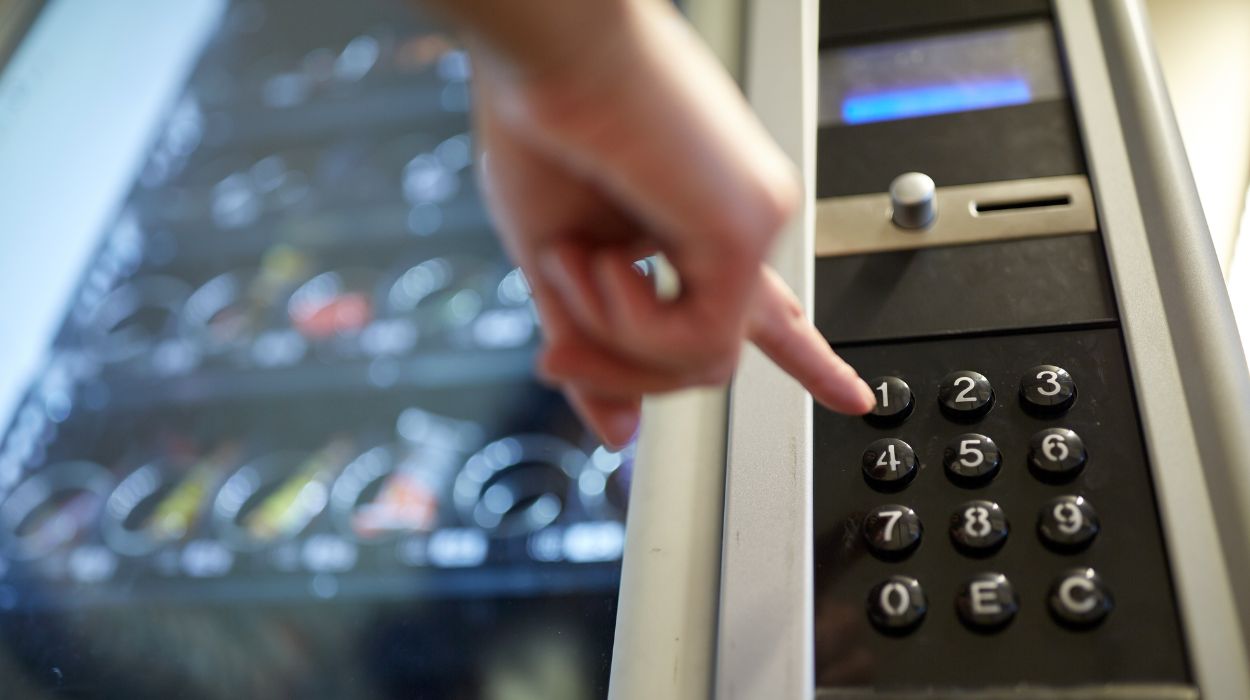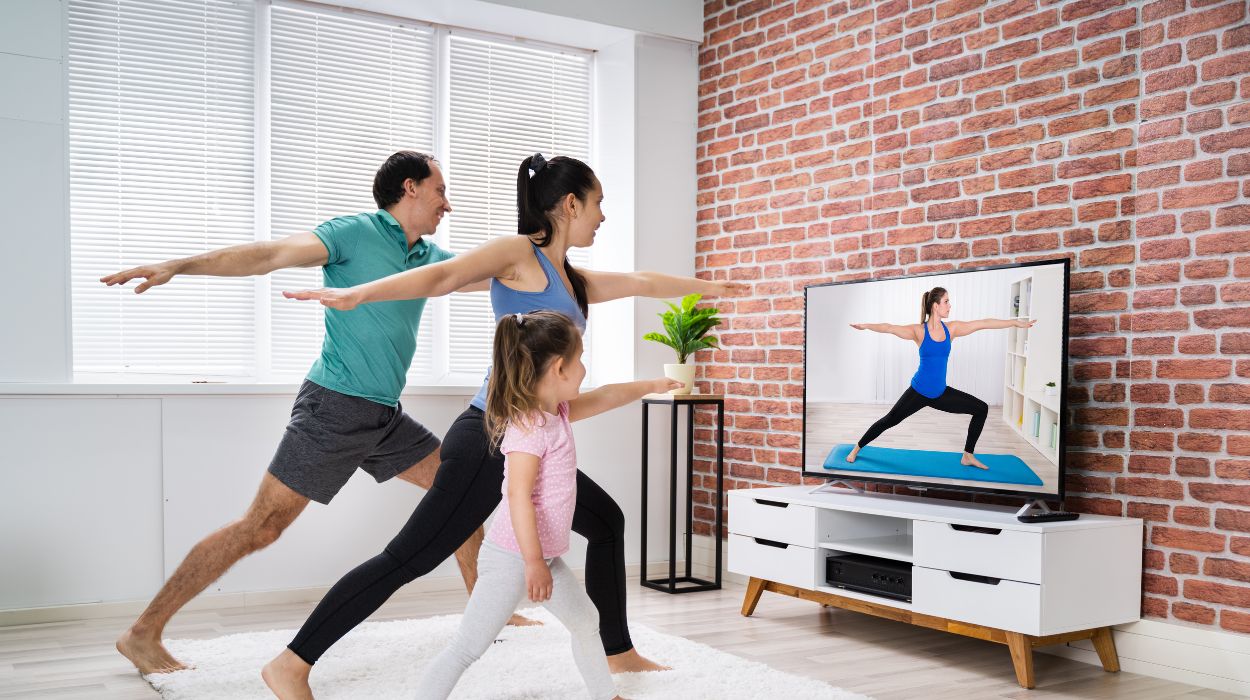How To Lose Weight With An Office Job – 8 Tips You Should Try 2024

Working a nine-to-five office job can sometimes make you feel like you’re stuck in a rut – back pain cripples you from endless sitting down, and your office diet consists of cafeteria food coupled with chips and cookies in between.
Office workers spend at least two-thirds of their working day,[1] in a sitting posture. It’s no surprise that when you look down to see an ever-expanding waistline, you dread the word ‘diet’. Find out here how CBD can help you with weight loss.
So how can you feel slimmer while sitting in front of a computer all day? Here are eight ways to lose weight if you are at a desk for most of the day.
How To Lose Weight With A Desk Job
- Keep hydrated
- Avoid vending machines
- Plan snacks and lunch
- Choose protein-packed food
- Exercise when you can
- Increase daily steps
- Stand while working
- Other weight loss tips without moving from your desk
8 Tips to Lose Weight with a Desk Job
Keep Hydrated
Water is essential for hydrating and maintaining a healthy body. Adults should drink 1.5L of water each day,[2] and more after physical exercise to prevent dehydration.
Dehydration can affect consciousness and the ability to concentrate. When you are dehydrated, your body can make you feel like you’re hungry when in fact, it’s water that you need.
Drinking water prevents snacking, and you won’t be as hungry when lunchtime comes and are therefore less likely to overeat. So bring a refillable bottle with you to work and keep it topped up, sipping it regularly during the day to prevent headaches and combat fatigue.
Naturally, drinking more results in more trips to the restroom, which increases daily steps, helping you lose weight.
Avoid Vending Machines

When you’re feeling hungry, turning a blind eye to that one particular vending machine right outside your office might not seem like an option. These culprits dotted around the office place often contain snacks low in fiber and high in sugar, fat, and empty calories, leading to weight gain.
Studies show the majority of products in any vending machine provide limited healthy choices,[3]. It’s all just too easy to grab something, such as a candy bar, and munch on it during the day, piling on the calories.
Instead of choosing high sugar-containing beverages, opt for diet soda. However tempting, ditch these machines with seemingly heavenly snacks if you want to lose weight.
Plan Snacks
Snacking is all too easy when you have a desk job. Studies reveal that snacking contributes to one-third of our daily energy intake,[4]; unfortunately, many snacks are energy-dense but contain poor nutritional content.
A good way to control your appetite is by planning snacks evenly throughout the day. This way, you won’t become ravenous and end up consuming a lot of junk food just before meals.
- Bring fresh food such as fruit. Healthier snacks generally require you to plan and bring them in on the same day instead of simply leaving them in your desk drawer.
- Avoid bringing nibbles that you can store in a desk drawer, so you don’t have to option to snack on them whenever you feel like it.
- Bring healthy refrigerated products such as low-fat, low-sugar yogurt. Walking to the fridge increases your physical activity.
- Prepare green tea; this contains catechins and caffeine, which some studies show increases energy metabolism,[5], which can help your diet.
So you are not tempted to overeat or continue munching away at something mindlessly, consider bringing snacks that only contain a single portion.
Choose High-Fiber and Protein-Packed Food
Some good snack options are whole foods high in fiber, protein, and whole grains that enhance satiety,[4], making you feel full for longer, controlling your appetite making you less likely to overeat.
- High-Protein food
Studies show that eating more high-protein foods can delay hunger longer,[6] than high-carbohydrate or high-fat foods. This is because protein takes longer to digest than carbohydrates and sugar, which leads to less snacking throughout the day, helping weight loss.
As well as avoiding the sugar rush and dip, protein helps to build and maintain muscle mass. The more muscle mass you have, the more your body burns calories at rest.
Good high-protein snacks include a hard-boiled egg, nuts, yogurt, prunes, popcorn, dairy, and soy.
- High-Fiber food
When you eat high-fiber foods (such as prunes or those containing barley or oat bran), you can prolong hunger,[7] and reduce sugar and carbohydrate cravings, reducing the need to snack on sweet food.
Unfortunately, women tend to snack more,[8] than men, and they compensated for this increased energy intake by reducing their main meals. So women are also more likely to gain excess fat if these snacks are full of empty calories.
But don’t worry, plan and prepare your main meals and snacks, and search for foods and recipes high in nutrients.
Exercise When You Can

We all know the health benefits of exercise when trying to lose weight. Exercising at different intervals during the day can help prevent long-term health problems,[9] associated with being stationary for too long, such as obesity and cardiovascular disease.
Try to find half an hour a day to work your leg muscles and pump your heart rate at work or home. Book yourself into a short workout during your lunch break, take short brisk walking breaks after your meal, or engage in some simple sit-ups to abolish belly fat while at home watching TV.
Setting a 30-minute timer and exercising helps you stay energized throughout the day for your whole shift, enables you to keep fit, and possibly helps you sleep better at night.
Increase Daily Steps
Studies suggest that healthy adults should take approximately 7,000 to 10,000 steps per day,[10]. You might consider purchasing a step-counting device such as a pedometer and try to increase your daily figure with the following tips:
- Get off public transportation earlier and walk the rest of the way to work.
- Park your car further away from the entrance of your workplace.
- Have a short stroll during your lunch or book a reservation at a nearby eaterie, and walk there.
- If possible, reschedule one-to-one meetings outdoors.
- Pair up with co-workers and challenge each other to see who wins.
Working a desk job doesn’t have to be boring; get up regularly, walk around the office after your meal, stretch your legs, help improve circulation, prevent cramps, and burn more calories to help lose weight.
Going outdoors where possible provides not only vitamin D but also fresh air and a change of scenery that revitalizes you. You will lose more weight walking down the stairs, out of the office, and back again.
Stand While Working
Most of us with desk jobs spend the majority of our day sitting down. Studies,[1] show links between sitting for long periods and increased risk of obesity, diabetes, high blood pressure, and musculoskeletal disorders such as low back pain.
Excessive body fat can in part cause insulin resistance which can lead to diabetes,[11]. By losing weight, you can change your body composition leading to a healthier and happier you.
While walking uses the most energy, you can still lose weight with a desk job. Spend part of your day standing to encourage more weight loss. Studies recommend standing or light activity for a total of 2 to 4 hours per working day,[12].
Some workplaces have sit/stand workstations that incorporate a standing desk. However, more research is needed,[13] to determine whether this helps you with losing weight, but at least this keeps you on your toes.
What Is The Best Way To Lose Weight Sitting At A Desk For 8 Hours? – Other Weight Loss Tips
If you don’t have the luxury of straying too far from your desk, you can do these simple exercises and your job simultaneously:
- Using an exercise stability ball instead of your office chair can prevent lower back pain with increased freedom of movement. Try sitting on the edge of the ball and doing sit-ups to work your abdominal muscles, reduce belly fat, and strengthen your inner core.
- Sitting Leg Raises prevents your legs from feeling sore or stiff. Sit and bend your knees with your feet flat on the floor. Slowly raise one leg parallel to the floor, holding for 10 seconds, then repeat with the other leg.
- Desk push-ups by placing both hands on the desk, keeping your legs straight, bending at the elbows, lowering yourself onto the desk, and repeating.
- Shadowboxing by raising your fists and punching away your stress.
- If you work night shifts, find out how you can lose weight here.
Conclusion
- Keep healthy by planning your snacks. Search for meal recipes high in fiber and protein and don’t succumb to the convenience of the vending machine, which only contains energy-dense, nutrition-deficient snacks.
- Create a calorie deficit to help you lose more weight by exercising and increasing your daily steps whenever possible.
- If you can’t go for a walk, then engage in simple exercises you can do from the comfort of your desk.
- Keeping hydrated is essential for maintaining good health and helps to curb hunger.
- Having a desk job doesn’t mean you have to sacrifice your health; small, subtle changes to your eating habits can improve well-being, aid weight loss, and help you lead a happy life.
+ 13 sources
Health Canal avoids using tertiary references. We have strict sourcing guidelines and rely on peer-reviewed studies, academic researches from medical associations and institutions. To ensure the accuracy of articles in Health Canal, you can read more about the editorial process here
- Hadi Daneshmandi, Alireza Choobineh, Haleh Ghaem and Karimi, M. (2017). Adverse Effects of Prolonged Sitting Behavior on the General Health of Office Workers. [online] 7(2), pp.69–75. doi:https://doi.org/10.15280/jlm.2017.7.2.69.
- Jéquier, E. and Constant, F. (2009). Water as an essential nutrient: the physiological basis of hydration. [online] 64(2), pp.115–123. doi:https://doi.org/10.1038/ejcn.2009.111.
- Byrd-Bredbenner, C., Johnson, M.J., Quick, V., Walsh, J., Greene, G.L., Hoerr, S.L., Colby, S.E., Kattelmann, K., Phillips, B., Kidd, T. and Horacek, T.M. (2012). Sweet and salty. An assessment of the snacks and beverages sold in vending machines on US post-secondary institution campuses. [online] 58(3), pp.1143–1151. doi:https://doi.org/10.1016/j.appet.2012.02.055.
- Valentine Yanchou Njike, Smith, T.M., Omree Shuval, Kerem Shuval, Edshteyn, I., Kalantari, V. and Yaroch, A.L. (2016). Snack Food, Satiety, and Weight. [online] 7(5), pp.866–878. doi:https://doi.org/10.3945/an.115.009340.
- Jurgens, T.M., Anne Marie Whelan, Killian, L., Doucette, S., Sara and Foy, E. (2012). Green tea for weight loss and weight maintenance in overweight or obese adults. [online] 2012(12). doi:https://doi.org/10.1002/14651858.cd008650.pub2.
- Marmonier, C., D. Chapelot and Louis-Sylvestre, J. (2000). Effects of macronutrient content and energy density of snacks consumed in a satiety state on the onset of the next meal. [online] 34(2), pp.161–168. doi:https://doi.org/10.1006/appe.1999.0302.
- Brennan, M.A., Derbyshire, E.J., Brennan, C.S. & Tiwari, B.K. (2012). Impact of dietary fibre-enriched ready-to-eat extruded snacks on the postprandial glycaemic response of non-diabetic patients. Molecular Nutrition & Food Research, [online] 56(5), pp.834–837. Available at: https://pubmed.ncbi.nlm.nih.gov/22648629/
- Kant, A.K. & Graubard, B.I. (2019). Within-person compensation for snack energy by US adults, NHANES 2007–2014. The American Journal of Clinical Nutrition, [online] 109(4), pp.1145–1153. Available at: https://www.ncbi.nlm.nih.gov/pmc/articles/PMC6462429/#bib51
- Wheeler, M.J., Dunstan, D.W., Ellis, K.A., Cerin, E., Phillips, S., Lambert, G., Naylor, L.H., Dempsey, P.C., Kingwell, B.A. & Green, D.J. (2019). Effect of Morning Exercise With or Without Breaks in Prolonged Sitting on Blood Pressure in Older Overweight/Obese Adults. Hypertension, [online] 73(4), pp.859–867. Available at: https://pubmed.ncbi.nlm.nih.gov/30782027/
- Tudor-Locke, C., Craig, C.L., Aoyagi, Y., Bell, R.C., Croteau, K.A., De Bourdeaudhuij, I., Ewald, et al. (2011). How many steps/day are enough? For older adults and special populations. International Journal of Behavioral Nutrition and Physical Activity, [online] 8(1), p.80. Available at: https://www.ncbi.nlm.nih.gov/pmc/articles/PMC3169444/
- Maffeis, C. & Morandi, A. (2018). Body composition and insulin resistance in children. European Journal of Clinical Nutrition, [online] 72(9), pp.1239–1245. Available at: https://pubmed.ncbi.nlm.nih.gov/30185840/
- Gibbs, B.B., Kowalsky, R.J., Perdomo, S.J., Grier, M. & Jakicic, J.M. (2016). Energy expenditure of deskwork when sitting, standing or alternating positions. Occupational Medicine, [online] 67(2), pp.121–127. Available at: https://pubmed.ncbi.nlm.nih.gov/27515973/
- Burns, J., Forde, C. & Dockrell, S. (2017). Energy Expenditure of Standing Compared to Sitting While Conducting Office Tasks. Human Factors: The Journal of the Human Factors and Ergonomics Society, [online] 59(7), pp.1078–1087. Available at: https://pubmed.ncbi.nlm.nih.gov/28719766/



